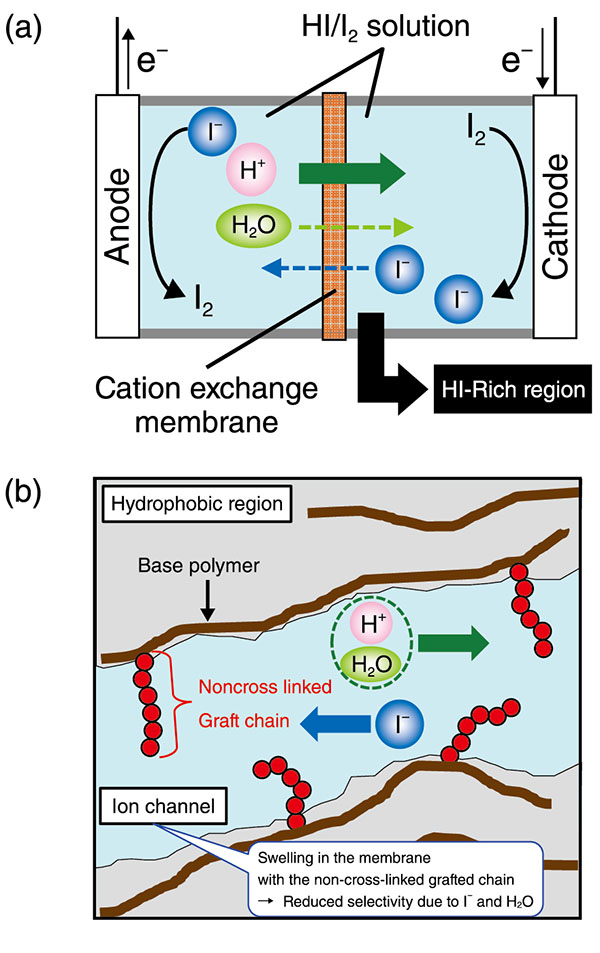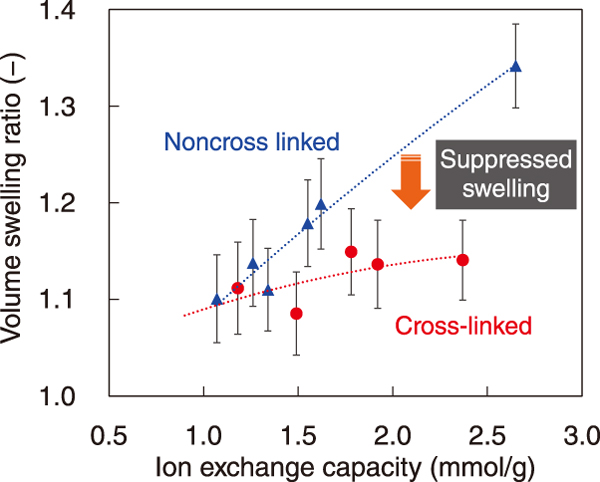
Fig.1 Principle of HI Concentration by Electro-electrodialysis (a) and Permeation Model of the Interior of a Cation Exchange Membrane (b)

Fig.2 Volume Swelling Ratio for Cation Exchange Membranes

Fig.3 H+ Transport number for Cation Exchange Membranes
A carbon-free hydrogen production technology known as the iodine-sulfur (IS) process, implemented in a High Temperature Gas-cooled Reactor, has been studied. Upon mixing water, iodine, and sulfur dioxide, an acid production reaction generates two types of acids: sulfuric acid and hydrogen iodide. Subsequently, the produced HI was concentrated by electro-electrodialysis (EED) using a cation-exchange membrane (Fig.1(a)). To enhance hydrogen production efficiency, it is crucial to reduce energy consumption during EED. To achieve this goal, the cation-exchange membrane should have both high conductivity and H+ selectivity.
Thus far, we have successfully fabricated cation-exchange membranes with high conductivity using a radiation-induced graft polymerization method developed at the Institute of Quantum Science and Technology. However, because of the intricate trade-off between the conductivity and H+ selectivity, it is challenging to achieve both requirements simultaneously.
To address this challenge, we elucidated the underlying causes of the trade-off using a mathematical model that simulates the permeation process during the HI concentration (EED model, Fig.1(b)). By increasing the number of hydrophilic graft chains with ion-exchange groups, the permeation of H+ can be promoted, thereby improving the conductivity. However, concurrently, the amount of HI absorbed into the membrane increases, causing excessive swelling and expansion of the ion channels through which the ions (H+, I-) and water permeate. Consequently, substances other than H+, such as I- and water, also permeate the channels, leading to reduced H+ selectivity. Therefore, we attempted to mitigate the swelling of the ion channel by introducing cross-linking to enhance the connectivity between the graft chains.
We fabricated cation-exchange membranes with cross-linked graft chains (cross-linked membranes) and investigated their effects of cross-linking. The volume swelling ratio attributed to solution absorption decreased by up to 20% compared to that in the case of noncross-linked membranes, indicating the successful suppression of swelling (Fig.2). Furthermore, the H+ transport number increased by at least 0.1, as indicated by the evaluation of the membrane performance from the results of the HI concentration tests using EED. In other words, there is a remarkable enhancement in the H+ selectivity (Fig.3). This performance improvement is equivalent to a 10% decrease in energy consumption during the EED process. Thus, the introduction of a cross-linked structure was effective for enhancing the performance of the cation-exchange membranes used in EED for HI concentration.
As the next step, we intend to continue our efforts to develop membranes that can deliver higher performance.
(Nobuyuki Tanaka)